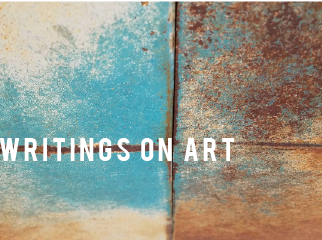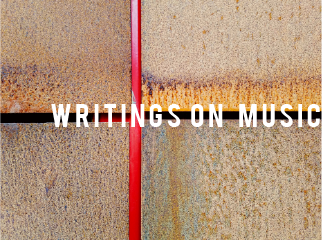Kerry Moosman
“Slowing Time: The private and public art of Kerry Moosman”
By Katy Dang
Idaho Arts Quarterly |March 7, 2001
https://www.boiseweekly.com/boise/slowing-time/Content?oid=931120
Kerry Moosman is an artist whose work is indelibly intertwined with history. He has an appreciation of history that informs his creations and allows the past and present to interact. In all of his work–as a potter, in his public art and as a restorer of historic buildings–he preserves a historical understanding by filtering the past into the present. In his pottery, Moosman utilizes ancient traditions and techniques and makes them his own, creating modern, contemporary sculptures of pots. In his public art projects, he takes historical information that exists for specific sites and presents it in a new way, providing a new context in which to understand what has come before. In his ongoing restoration of buildings in his hometown of Atlanta, Idaho, he combines public art with living history, demonstrating the continuity of what once was and what now is.
Moosman is a fifth-generation Idahoan on his mother’s side. His paternal great-great grandfather was a weaver in Switzerland, who emigrated to Utah in 1860 after converting to Mormonism. Both of his grandfathers moved to Atlanta, Idaho, to work in the thriving gold mines in the 1930s. His family has had a presence there ever since. Kerry was born in 1951, and lived in Atlanta until 1959, when his family moved to Boise. He spent summers with his grandparents in Atlanta, and now lives there for five months out of the year.
Moosman spends the other seven months of the year living in Boise, where he builds hand-coiled pots of monumental size that have become well-known throughout the art world and have established him as one of the best-known artists in Idaho.
His interest in pottery started during his school years in Boise. “Luckily, I had good art classes while I was in school, so a lot of this is just plain luck,” says Moosman. “There was a woman named Buehla Schiedeman who taught art at West Junior High. We did everything in her class: watercolors, woodblocks, and ceramics. I started making hand-built pottery in 1963, and started coiling in the 7th grade. I had another teacher named Estelle Bentley at Borah High School, and she was very encouraging to me.”
“Sometimes you do things, and you just know that it feels right,” Moosman says. “That’s how it was for me. I love the creative process of working with clay. It’s magical: You start with something that’s nothing, and then it moves nicely, and holds its shape. It responds to you.”
Moosman continued to work in ceramics, and after graduating from high school in 1969, he attended Boise State University. After graduating with a BFA in ceramics and sculpture in 1975, he stayed on there, in various functions, until 1982.
At Boise State, Moosman worked under the Korean-born Japanese ceramist John Takehara. “The Northwest is important in contemporary ceramics because of the artists at the Archie Bray Foundation in Helena, Montana. John Takehara was a key figure in the Northwest, and he invited a lot of those people to BSU,” says Sandy Harthorn, curator of art at the Boise Art Museum.
“Everybody who’s anybody went through there,” adds Moosman. “Takehara set up workshops and brought in people like Daniel Rhodes and Warren MacKenzie.”
“Takehara was real sparkplug kind of a guy,” says Moosman. “He was completely dedicated to his work. Not everybody found it easy to get along with him, but coming from a small town, you don’t just choose the strata of people that you want to hang out with like you do in the city; you hang out with all sorts of people. It makes you very flexible, so we got along fine.” Moosman became Takehara’s studio assistant, and worked in the ceramics studio in a variety of capacities: studio assistant, graduate student, instructor. “It gave me the opportunity to be around clay every day.”
While at Boise State, Moosman explored the traditions of claymaking in the Americas. He became a student of the history of Native American pottery, particularly the work done in the Southwest. At the time, he was creating hand-built pots and began working in a larger scale. “There’s less starting and stopping that way,” he explains. “A bigger piece requires a longer involvement.”
Moosman was also pursuing his other interest during this time: the history of his surroundings. Moosman had the opportunity to study under Merle Wells, the state historian, and also took classes in architectural history from Arthur Hart. For two years, he worked at the Idaho Historical Museum where his job was organizing the photography collection into a card catalog system. “My main love of history is of its historic photography,” says Moosman. “I love the quality of the photos and the way these early photographs were so carefully composed. They had a lot more at stake–it was usually a one-shot deal. They really spent a lot of time on composition.”
During the 1970s, Moosman saw that a lot of the history he had grown up around was getting lost. As the town of Atlanta’s older generation died off, the buildings that had been functioning started to suffer from neglect, or worse yet, destruction. “I had gotten used to the general decay of things, and then there was a period in the 1960s where we were experiencing a big loss of these great old buildings that were demolished so that people could establish a townsite,” says Moosman. He saw that other historic towns like Silver City were restricting the demolition of historic buildings, but that hadn’t happened in Atlanta. While at Boise State, Moosman drafted a petition to the Idaho State Legislature that would set aside a three-acre parcel of downtown Atlanta for historic preservation. Through his efforts, the town jail, a lawyer’s office and three residential dwellings are listed on the National Register of Historic Places. He began the ongoing project of restoring these buildings after having successfully saved a part of his life that had significance not only to him, but to the overall historic understanding of the place.
After graduating from college, Moosman spent some time trying to figure out what to do with his life. “I was a bartender, and I worked in the mines, and planted trees; you know, all those sorts of jobs.” He moved up to Atlanta to live off the fat of the land, but in 1976 his house burned down and he had to reconsider what he wanted from life. “I figured out that what I really wanted to do was to make pottery, live in the mountains, and restore old buildings.” Unlike other people, who abandon their dreams to fit into the proper mold of society, Moosman decided to do exactly what he wanted to do. He has been doing it ever since.
“He is inspired by his own things,” says Harthorn. “He follows his own spirit and has his own aesthetics. I think that pioneering element comes from his family; he’s been in Atlanta forever. His family history has inspired his learning about all kinds of history in Idaho.”
“I was selling some work in craft stores and student sales,” says Moosman. “There was a show at the BSU Gallery in 1982 that included some of my hand-built pottery along with the work of Mike Cordell and Web Docherty. I sold some stuff there, and that made me think that maybe I could make a decent-enough living doing this. At that point, I started to look at it as a job.” Dennis Ochi, the Boise State Gallery director, started showing Moosman’s work at his gallery on Main Street, and he has had gallery representation ever since.
In 1982, Moosman started teaching pottery classes at the Fort Boise Community Center, which had been started in an old army barracks in 1979. Rick Jenkins, the art director, was responsible for building up the arts program. Moosman taught one class there and used the studio for his own work. “Once I started here, I just kept coming back,” says Moosman. “I really respect that it’s affordable and is of very high quality. We have a real center for the community [there].”
During the early 1980s, Moosman’s work began to change. His work in the 1970s was tall, hand-built coil vessels of stoneware that he decorated with colorful designs and glazes. The early work, while in a monumental style, was inspired by different places and shows a use of abstract landscape design.
Sandy Harthorn has known Moosman since his Boise State days. BAM has four of his pieces in their permanent collection that trace his career as a potter through the various stages of his development. The earliest of his pieces, from 1972, is titled What I Remember Most about More’s Flats. The effect of seeing the older work in conjunction with the more recent is a bit mind-blowing.
Harthorn remembers a show at BAM in 1984 that seemed to have quite an effect on Moosman. Called “Southwest Native American Art from Sun Valley Collectors,” it featured significant collections of rugs, baskets and pottery, including John Beaupre’s collection of pottery.
“Kerry was in all the time for that show,” she recalls. “I really think there was a change in his direction after that show. His earlier work used symbols and figures. He was working on the same scale, but after that show, the shapes, forms and surface changed. He really drew inspiration from Native American culture and started burnishing his work.”
Moosman recalls the shift. “I saw lots of Native American pottery,” he says. “I liked the simplicity of what I saw. I saw some simple, black pottery from the Pueblo, and it really struck me. Plus, the glaze that I had been using on my pots suddenly stopped working; it just changed somehow, and I started ruining all these pots,” he recalls. Clearly it was time for a change.
“I started experimenting,” he says. “Once you’ve been around pottery long enough and worked with enough clay, it becomes like a language, and you can read it just by looking at it. So I started looking at different pottery, and wondering how in the hell they did what they did.”
Moosman mentions Maria Martinez (circa 1880-1980) of the San Ildefonzo Pueblo as being influential to him with her black-on-black coloring, and Nampeyo (1860-1942), a Hopi woman who made “low, melon-shaped flying saucer kind of forms,” as having an impact on him. Of course, he adds, “Lots of the potters that I admire worked anonymously.”
Inspired by what he was learning from the Native American potters, Moosman developed the technique that has brought him a great deal of attention. “There is a definite relationship with Native American art, but Kerry makes it his own,” says Harthorn.
“I wanted to create art that has a calming influence,” says Moosman. “I wanted it to be meditative and minimal, because that’s the atmosphere that I want to live in. That’s the way that Native American work resonates with me. I also appreciate the cultures that they came from; the fact that they are handmade, using organic material, and that they come directly from the earth. I’m an old hippie, you know; I’m a product of trying to find a new way of living and all of that.”
When beginning a new piece, Moosman starts with a sketch of the pot that he is going to make, then assembles the piece by coiling clay onto a base. His whole way of working takes a long time for every pot. “It’s not a process that lends itself to mass production,” he says. “I think this is the most drawn-out, time-consuming way to do it.” It takes a minimum of 10 days to two weeks to coil a pot and establish the structure. After that, it takes at least a week to dry it. Then the polishing starts. “I found a way to slow down time: start polishing pottery,” says Moosman. “And slowing down time becomes important as you get older.”
Moosman puts water on the surface and the clay absorbs it. As it starts to dry, he uses a small stone to compress the surface by rubbing it across the pot, one section at a time. The stones that he uses have done so much rubbing that they are worn flat in places. “It takes longer to polish a pot than it does to make a pot,” he says. “It probably takes 20 days or so. You have to be extremely consistent, and to be aware of the clay and what’s happening to it,” he says. “There’s a real subtlety to doing this. When it moves to a high gloss, it’s a minimal change: The molecules of clay line up, and compress, and become transparent. It’s a cool effect. You can actually see into the clay.”
Firing the pots is the part of the process that Moosman doesn’t have control over. “Part of the fun is the element of surprise,” he says. “I look at it like a canvas at this point. I like to hand it over to see what the other side has to offer.”
The results of Moosman’s work in this process are the large-scale vessels that have become his trademarks. “I make sculptures of pots,” he says. His work has been selected for inclusion in every Idaho Biennial, from the first in 1979 to the “Centennial Biennial” in 1990, when he earned a juror’s award of distinction. He was invited to have a solo show at the BAM in 1991.
In the accompanying notes to the show, BAM director Dennis O’Leary wrote, “[Moosman] uses classical ceramic techniques to create completely contemporary artworks … While he demonstrates a clear knowledge of and reverence for ceramic traditions of the past, his pots possess form, scale and character which clearly set them apart from their historical antecedents.”
“The pottery was absolutely stunning,” says Harthorn. “His work is very carefully considered. He addresses each one in a slow process, and takes however much time it takes to make a quality piece. For him, quality is more important than quantity.
“What makes him so important is the elegance of form,” she says. “That’s what we focus on in our collection. He makes dynamic work. He has an elegance of form and surface textures and creates work that is elegant and beautiful. He reaches perfection with his work.”
Anna Marie Boles, the assistant director of the Stewart Gallery in Boise, where Moosman has been represented since 2002, first became aware of his work around this time. “I first saw his work at BAM,” says Boles, “and I remember not being able to breathe when I saw it. There is so much motion in his work; it just levitates. It’s just glorious form. It is as if that form exists and Kerry makes it visible for the rest of us with clay.”
It was around the time of his BAM show that Moosman’s work took an unexpected detour into the realm of public art. The result was the installation of two permanent ceramic collages that grace the exterior walls of two downtown Boise buildings. Both pieces are heavily influenced by the history of Idaho.
In 1991, he submitted a proposal for a public art piece in downtown Boise. “I wanted to comment on the founding of Boise,” says Moosman. “I wanted to make a piece that spoke to the fact that Idaho has been culturally diverse throughout its history. The piece that I proposed was a reaction to the growing conservativism in Idaho.”
The result is Alley History, the ceramic collage that can be seen in the alley off of 9th Street between Idaho and Main on the McCarty building.
“Most things in the piece came from this alley,” he says. He made images of signs that were painted on the walls or doors of the alley, and used Chinese lettering that came out of old newspapers. Because there was no evidence around town of the Native American inhabitants that had lived in the area for thousands of years, he used an image of a Native American from the Owyhee Candy Company. And, of course, there is the famous Mr. Potato Head that he appropriated from some old decals. As he began to clear the area to mount his tiles on the wall, a strange thing happened: The spray from the sandblaster started lifting off layers of paint, exposing other paint below. Moosman had no idea that the older paint was there, but chose to include it in his work. “It was already collaged before I got there,” he says. “There was some kind of magic going on there, and it makes the piece that much more rich.”
Ten years later, Moosman got a commission for a second public art piece, this one on the Idanha building. “In Kerry’s proposal, Alley History was presented as the methodology,” says Karen Bubb, director of public art for the City of Boise Arts Commission. “It was the cousin to the new piece that Kerry proposed, Spirit of Healing Waters, which focused specifically on the history of the site.”
“The Idanha building is a survivor,” says Moosman. “It is built on the first lot in the Boise Township. I wanted to do a piece of contemporary art that would be compatible with history.”
The original logo for the Idanha was a Native American man, and Moosman used it as the center of his collage.
“When Kerry proposed to use the image, the selection committee challenged him to identify the image, and he did,” says Bubb. “He was the Cheyenne Chief Wolf Robe. It was great for him to identify and name him.”
Historical items specific to the building form the rest of the images in the piece: There are original stock certificate borders, menus, signatures of the original investors, and images of the building itself from different periods. His ability to take what already exists and present it in a new way adds to the overall historical understanding of a place. He is able to represent the past while delivering it in a new and vibrant context.
“It was completed in 2002 and immediately got a very positive response,” says Bubb. “Stylistically it is very similar to Alley History. There is the recognition of the artist, and of similar location: Both are in an alley, on the right. This is a very quiet piece; it is engaged by the history that it reveals and the voids that are present. There is an elegance of not being afraid to leave some things out.
“It’s amazing that he is so gracefully able to transfer his skill from pots to that medium,” says Bubb.
Moosman has spent the intervening years working as he decided he would so many years ago: He builds pots for half of the year, and lives in the mountains and restores old buildings in his hometown for the rest of the time. “It’s nice to take a break,” he muses. “I’m able to focus on my pottery for a few months, and then when I’m away from it, I get to the point where I miss it and start thinking, ‘Today would be a nice day to be in the studio.'”
His work continues to attract the attention of collectors and to garner the appreciation of those who come in contact with it. In 2006, he was presented with a Governor’s Award for Excellence in the Arts.
“The form itself is what it’s about,” says Boles of Moosman’s work. “It’s so elemental, and the craftsmanship is so beautiful. It’s about form and shape and balance, and the eye that he has for the space around it. His work defies gravity. He has made a traditional form that has a modernity; even though it reaches to the most ancient forms of man, it is a classical form for our times. You know, every industry adapts or adjusts to changing tastes. He has ignored that potential and has kept a sense of direction that is remarkable.”
“I’ve always thought his work was extraordinary,” says Stephanie Wilde, artistic director of the Stewart Gallery. “Kerry is very understated. He isn’t focused on having a career; he’s focused on the creating of his work. His pieces are very remarkable and very collectible. We’re honored to have his work in our gallery.”
“He pursues perfection and settles for nothing less,” says Harthorn. “He has the vision to see or to know when things are right or perfect. We are big supporters of his at the Boise Art Museum, and we almost always have something of his on view. His work could be shown anywhere in the U.S. and be a star in anyone’s collection.”
His influence as an instructor has been far-reaching over the years, from his days at Boise State to his continued teaching of classes at the Fort Boise Community Center. Most students working in ceramics around the Treasure Valley have either worked with him or been influenced by him. “There’s pottery for everybody here,” Moosman says. “Adults, kids, troubled teenagers, special needs people. We’re saving the world through pottery.”
The restoration of Atlanta continues. “It’s an ongoing process. You have to identify the most pressing problem and start there. You never know exactly what it’s going to take. When we were kids in Atlanta, our recreation was sneaking into old buildings,” says Moosman. “I guess I’ve never stopped doing that. I’ve had many friends come up to Atlanta and buy houses and fix them up, or build new ones with an eye toward historical continuity. The rest of the world has a sameness of everything; a homogeneity. I’m lucky to know people that recognize the history and cultural value of a small place like Atlanta,” he says.
Moosman’s work is a testament to what can be created when you cut your own swath in life, while never forgetting to give a nod to what has come before. He has managed to weave the past seamlessly into the present, recognizing that they are not separate entities, but parts of the same whole.



